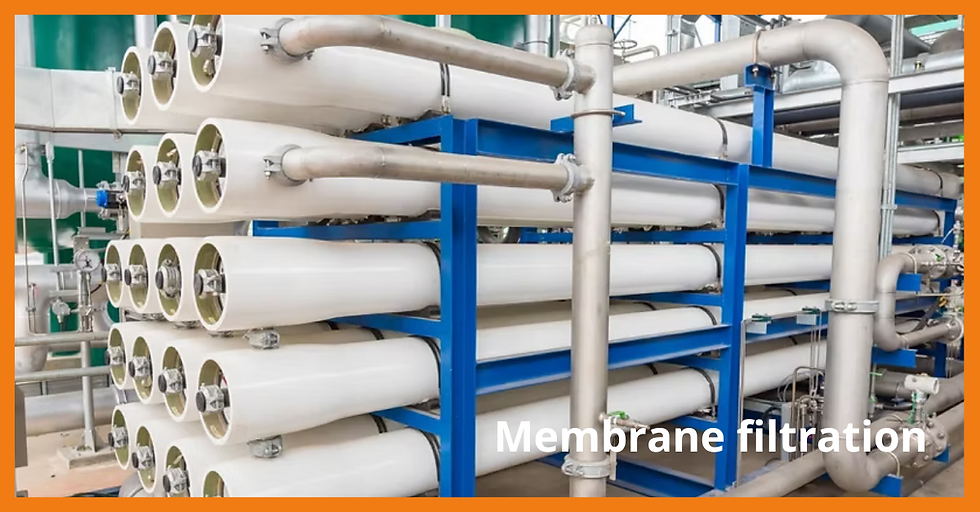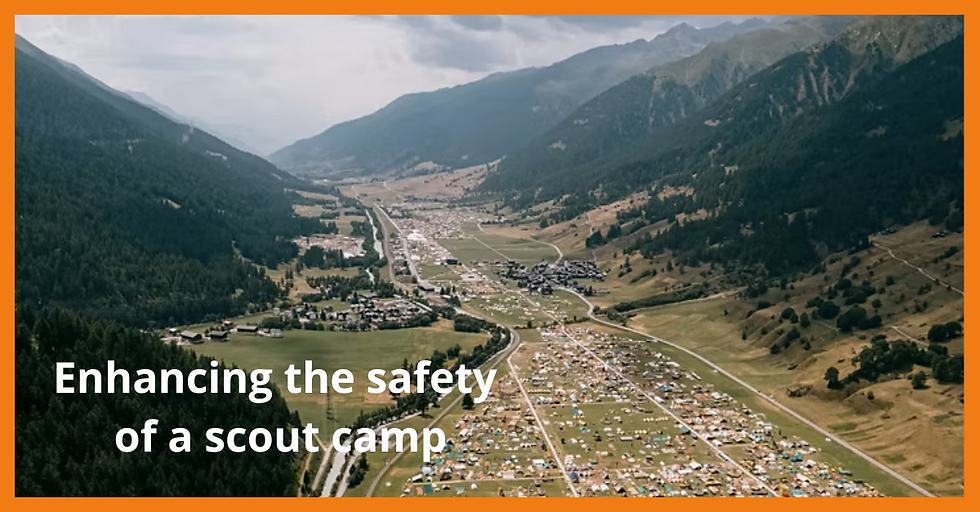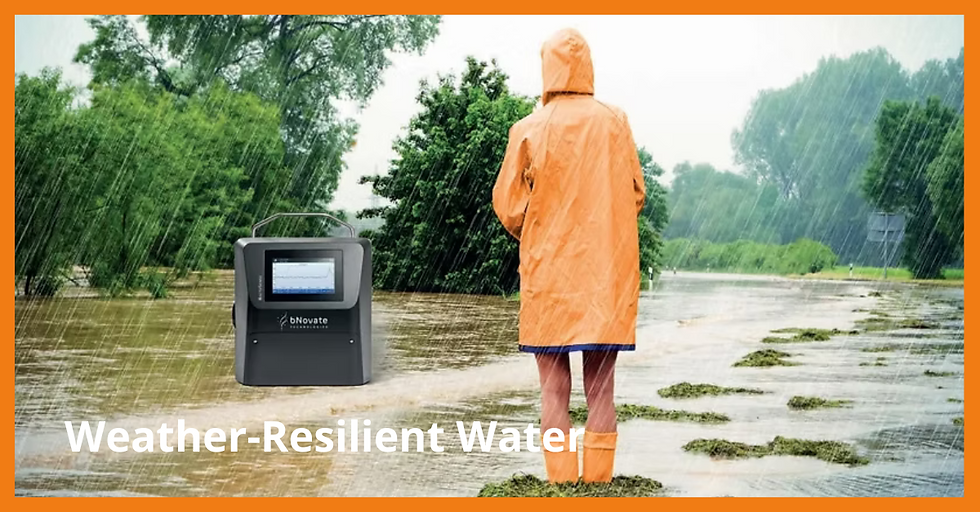A dive into automated water sampling technology
- bNovate

- Jan 25, 2024
- 4 min read
Updated: Jun 9, 2025

Automated water sampling has revolutionised how we monitor and ensure the quality of our water resources. This game-changing technology has become a cornerstone in the evolving field of water quality monitoring. The transformative capabilities of cutting-edge technologies elevate the precision of water analyses and redefine the efficiency of the entire process.
Integrating automated sampling and online measurement makes BactoSense an invaluable tool, providing unparalleled efficiency and accuracy in real-time measurements of bacteria in water.
Automated water sampling instruments are reshaping water quality monitoring, setting new reliability and ease-of-use standards.
Unveiling the world of automated water sampling
The water industry has witnessed a paradigm shift by introducing cutting-edge automated water sampling solutions. By embracing automation,
We enhance the accuracy of our water quality assessments;
We can establish a proactive approach to preserving the health and sustainability of our water resources.
The integration of automated sampling enables us to protect and enhance our water ecosystems.
Using automated water sampling devices produces accurate results at reasonable costs and without health risks by controlling sampling intervals and frequencies and how individual samples are collected or mixed.
Rapid results: a timely breakthrough
Traditionally, assessing water quality was laborious, demanding considerable time and resources and often yielding results only after days of waiting. Both maintenance works and emergency repairs bear the risk of introducing contaminations to the water distribution system.
Therefore, they require thorough flushing of pipes and water quality monitoring before commissioning. In addition to the health risks, downtime generates high costs. BactoSense marks a transformative leap in this area, ensuring significant time gain and water safety.
With BactoSense, the entire sampling, preparation and measurement process is seamlessly automated, delivering precise results within 20 minutes.
Getting data fast also considerably enhances operational efficiency. The swift turnaround time ensures that potential issues in water quality are identified promptly, allowing for quick and informed decision-making, which is critical for the surveillance and timing of pipe flushing processes.
For example, several of our innovative customers already recognized the benefits of BactoSense's high sampling frequency and rapid turnaround time for safe and efficient pipe commissioning.
Evolution of regulatory standards
With changing regulations and standards, it becomes imperative for the industry to adapt to automated technologies. However, transforming risk-averse industries such as the water industry isn’t simple.
The urge to minimise risk, where even the most minor errors can be very costly, makes it natural to be cautious about moving away from traditional methods. Still, integrating automated technologies for water quality monitoring means aligning day-to-day practices with regulatory frameworks.
The anticipated surge in sampling frequency, driven by the efficiency and accuracy of automation, means adapting to a new era of monitoring.
Meeting customer demands
Customer expectations play a pivotal role in technological advancements. Automated water sampling, in combination with other innovative methods, allows water professionals to set up solutions that meet their standards.
Take the example of the water services of the city of Saxon, which uses weather data supplied in real-time by MétéoSuisse on a cloud application (RainAlert) to automatically adjust the frequency of sampling and measurements by BactoSense through PLC (programmable logic controller) and SCADA (supervisory control and data acquisition).
In Saxon, rain or snowmelt periods present greater pollution risks and require greater attention. The illustration below shows how the measurement interval is adjusted according to the weather and how water quality is determined.

It's not just about collecting data but also about compiling and analysing them. The modern customer demands a holistic approach. Automated sampling solutions meet these expectations by providing a wealth of streamlined and efficient data. Building an environment to foster conversations and establish new policies and financial models will allow the public to engage more meaningfully and transparently.
Moreover, the discourse extends to cost-effectiveness, a critical factor in any industry. By optimising processes, reducing manual labour and minimising the margin for error, these solutions contribute significantly to cost efficiency.
Looking ahead: the future of automated water sampling
What's the trajectory of automated water sampling in the forthcoming years?
It will become integral to a highly connected and intelligent water management system. Technological advancements will propel these instruments to new heights, incorporating artificial intelligence, machine learning and enhanced sensor capabilities.
Picture a future where the interconnected network of automated sampling solutions collaborates seamlessly with other intelligent technologies, forming an ecosystem that monitors, predicts, adapts and responds to the evolving water quality dynamics.
The revolution initiated by automated water sampling catalyses a paradigm shift, setting the stage for a more sustainable, resilient and resource-efficient water industry. We anticipate a convergence of precision and adaptability. These systems will provide more nuanced and real-time insights into water quality dynamics.
Economically, the implications are equally promising. As these technologies become more sophisticated, we foresee a broader adoption that will lead to economies of scale and a reduction in the overall cost of implementation.
The upfront investments in advanced automated sampling solutions are likely offset by long-term efficiency gains, thus making them increasingly accessible to a broader range of users, from municipalities to private industries.
Consider also the market trends that will shape the future of automated water sampling, from the growing emphasis on data-driven decision-making to increasingly integrating these systems into innovative city initiatives. So, aligning with emerging trends will ensure that automated sampling remains at the forefront of innovation and sustainability.
If you want to test BactoSense and see why it’s becoming the new standard in water monitoring, book a demo, and one of our experts will get in touch.










Comments